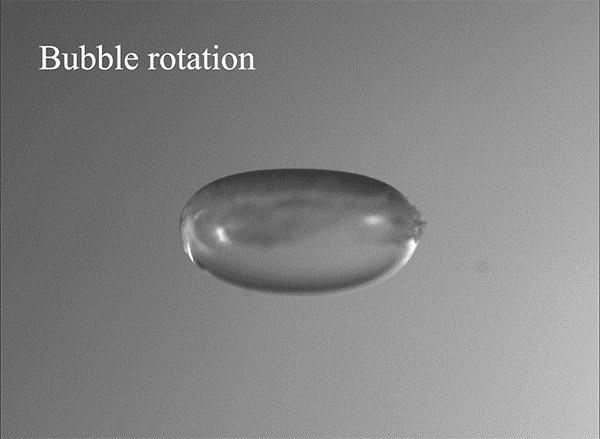Hello Nature readers, would you like to get this Briefing in your inbox free every day? Sign up here.
Even before recent complaints about X’s declining quality, posting a paper on the social media platform did not translate to a boost in citations.Credit: Matt Cardy/Getty
Posting about a paper on X (formerly Twitter) seems to boost engagement but doesn’t translate into a bump in citations. A group of 11 researchers, each with at least several thousand followers, tweeted about a combined 110 articles between late 2018 and early 2020. In the short term, this increased the papers’ downloads and their Altmetric scores (a measure of how many people have looked at and are talking about it). But three years later, the citation rates for the tweeted papers weren’t significantly different to those of 440 control articles.
Members of the US Supreme Court expressed scepticism yesterday about arguments from a group of anti-abortion organizations and physicians seeking to restrict use of the abortion drug mifepristone in the United States. Over the past eight years, the US Food and Drug Administration expanded the drug’s usage limit from 7 to 10 weeks of pregnancy and allowed it to be sent by post. If the court invalidates those actions, mifepristone access would be restricted nationwide. Reproductive health researchers say that the case has no scientific merit, because mifepristone has proved to be safe and effective. A decision is expected in June.
After Homo sapiens expanded out of Africa 70,000 years ago, they seem to have paused for some 20,000 years before colonizing Europe and Asia. Now researchers think they know where. Looking at ancient and modern DNA, and the environment of the time, scientists have pinpointed the Persian Plateau — which in this definition encompasses Iran, the United Arab Emirates, Kuwait and parts of Oman — as the perfect place. Finding local archaeological evidence to confirm this could be difficult. “There’s very little work being done there because of geopolitics,” says archaeologist and study co-author Michael Petraglia.
Reference: Nature Communications paper
The Francis Scott Key Bridge would have been designed to survive a collision with a ship — but the sheer size of modern cargo vessels might surpass what was planned for, say engineers. Yesterday, the bridge in Baltimore catastrophically failed after one of its supports was struck by the 300-metre cargo ship ‘Dali’. The shocking speed of the collapse was due in part to its ‘continuous truss’ design, specialists say. “The collision of a vessel as large as the Dali container ship will have far exceeded the design loads for the slender concrete piers that support the truss structure, and once the pier is damaged you can see from the videos that the entire truss structure collapses very rapidly,” says structural engineer Andrew Barr.
Features & opinion
In 1997, ecologist Suzanne Simard made the cover of Nature with the discovery of a subterranean network of roots and fungal filaments through which, it was suggested, trees were exchanging resources. Simard’s ideas, further expressed in her hit scientific memoir Finding the Mother Tree, resonated deeply with many. But some ecologists think our fascination with the ‘wood wide web’ has outstripped the scientific evidence that underpins it.
Of the ten speakers from low- and middle-income countries invited to a panel in Portugal last month, only four were able to get visas — and Ghanaian herpetologist Sandra Owusu-Gyamfi wasn’t one of them. “My experience left me feeling demoralized, embarrassed and insulted,” she writes. Her visa fees, flights and other costs were not refundable. Visa issues also come at a cost to global efforts to prevent further biodiversity loss. “Our participation is not a matter of simply ticking the inclusivity boxes, but a deliberate effort to ensure that the voices of people for whom some of these conservation policies are formulated are heard, and their opinions sought,” writes Owusu-Gyamfi.
Image of the day

Bubbles can be made considerably more stable by suspending them in the air using sound waves. This could reduce the need for surfactants that help them keep from popping when they’re used in industrial processes. Using ultrasonic waves, researchers kept soap stable for up to 15 minutes — longevity that’s previously only been achieved under microgravity conditions, for instance on the International Space Station. The bubbles tended to rotate a few times per second, maybe because of the way the sound waves moved around them. (Nature Research Highlight | 3 min read, Nature paywall)
Reference: Droplet paper (Credit: X. Ji et al./Droplet (CC-BY 4.0 DEED))
The 8 April total solar eclipse (visible in parts of the United States, Canada and Mexico, you lucky devils) will be more than just a visual phenomenon. The NASA-funded Eclipse Soundscapes Project is collecting multi-sensory observations and recorded sound data from community scientists on the day. Another effort, GLOBE Eclipse, asks volunteers to document air temperature and clouds during the event. As for me, I want to hear about the vibe.
Send your vibe-checks — plus any other feedback on this newsletter — to briefing@nature.com.
Thanks for reading,
Flora Graham, senior editor, Nature Briefing
With contributions by Gemma Conroy and Katrina Krämer
Want more? Sign up to our other free Nature Briefing newsletters:
• Nature Briefing: Anthropocene — climate change, biodiversity, sustainability and geoengineering
• Nature Briefing: AI & Robotics — 100% written by humans, of course
• Nature Briefing: Cancer — a weekly newsletter written with cancer researchers in mind
• Nature Briefing: Translational Research covers biotechnology, drug discovery and pharma

